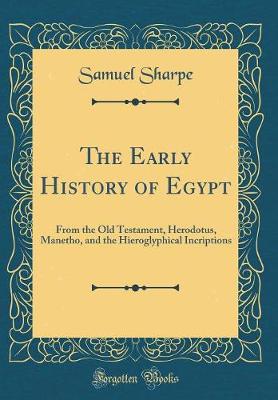Cambridge Library Collection - Egyptology
2 total works
This 1836 work by Samuel Sharpe (1799-1881) is the first of two volumes on the history of ancient Egypt; the second, dealing with the Ptolemaic period, is also reissued in this series. From a banking family, Sharpe was fascinated by Thomas Young's and Champollion's work in deciphering the hieroglyphs. He taught himself Coptic, and compiled his own hieroglyphic vocabulary lists. His facility for decipherment was assisted by a natural gift for solving cryptograms, but his inferences sometimes led him into error. His objective in this book is 'to collect out of the writings of the ancients every particular relating to the History of Egypt', marshalling ancient authorities including the Old Testament, Herodotus, Diodorus Siculus and the Ptolemaic priest Manetho, whose division of the rulers into dynasties is still relied on. The second part of the book uses this evidence to discuss Egyptian life, language, beliefs and customs.
The Alabaster Sarcophagus of Oimenepthah I., King of Egypt
by Samuel Sharpe
Published 11 December 2014
Oimenepthah I, better known to us as Seti I, was regarded as a great pharaoh by his contemporaries, although his son Ramesses II would claim greater renown. Seti's tomb was discovered by Belzoni in 1817 and was the first to be found to have extensive decorations throughout. The huge alabaster coffin found in the tomb was sold to Sir John Soane, who held a three-day party upon its arrival at his London house, where it can still be seen. Written by the noted Egyptologist Samuel Sharpe (1799–1881), this illustrated description of the intricately decorated sarcophagus was published in 1864. By the time of his death, Sharpe was regarded in Britain as one of the most important figures in helping to popularise all things Egyptian. With the artist and sculptor Joseph Bonomi (1796–1878), who provided the drawings here, he collaborated in organising the Egyptian court at the Crystal Palace in 1854.

